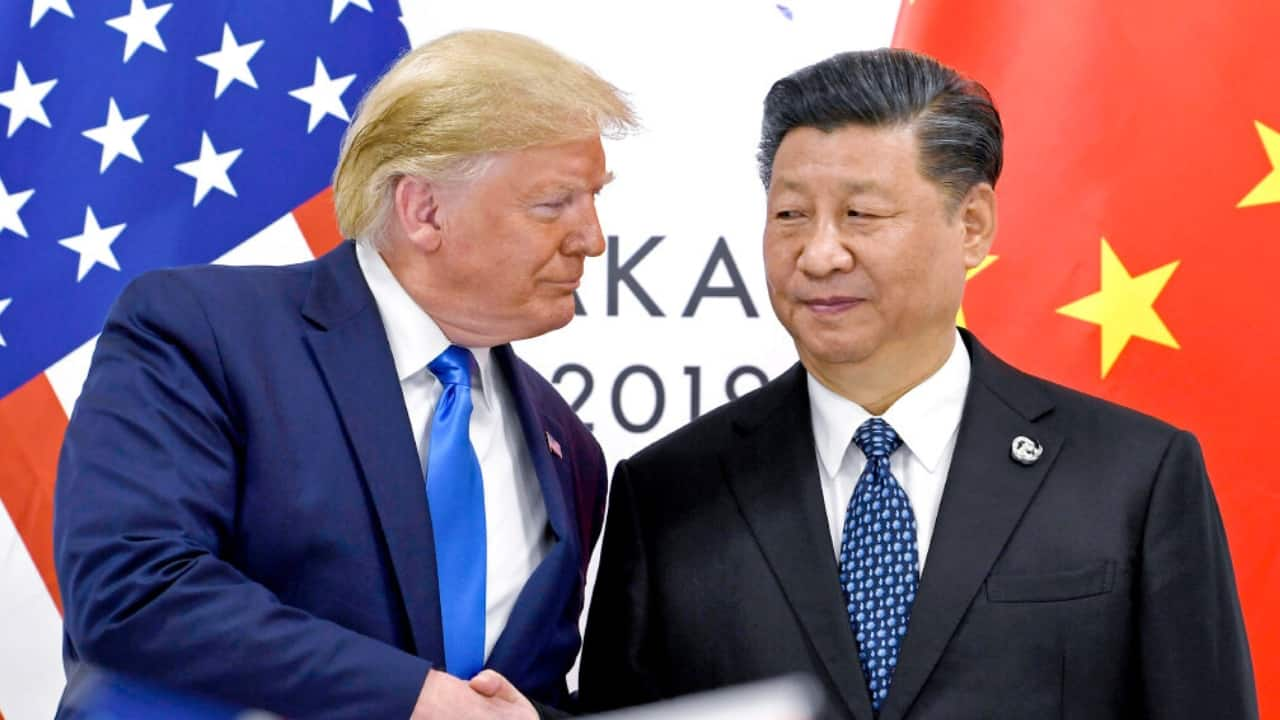President Donald Trump recently implemented the biggest tariff increase from the U.S. since the 1930s.
He said one of his goals is to grow manufacturing stateside.In his announcement, the president said the U.S.

could be a manufacturing hub again. “Empty, dead sites, factories that are falling down ..
. will be knocked down, and they’re going to have brand new factories built in their place,” Trump said. “We’re going to be an entirely different country.
”Several economists have taken a different view. They say tariffs could lead to a major slowdown in the economy or, worst case scenario, a recession.A few factors they note: The U.
S. unemployment rate is 4.1%, meaning the labor supply might not be adequate for a manufacturing surge; It will still be cheaper for many companies to pay tariffs than pay American wages; and rebuilding the manufacturing sector could take decades.
Supporters of the tariffs say the Trump administration’s efforts at deregulation could speed up investment in manufacturing. They point to recent investment in the U.S.
, such as Nissan deciding to keep up production at a Tennessee auto plant after previously saying it would cut shifts.Question: Could the U.S.
become a manufacturing hub again?EconomistsCaroline Freund, UC San Diego School of Global Policy and StrategyYES: But hefty tariffs won’t bring manufacturing back. Most goods are made in global supply chains and tariffs make U.S.
producers less competitive than foreign producers because imported parts and components are more expensive. Meanwhile, policy whiplash is restraining investment. Why build now if you have no idea what anything will cost next month or next year? Finally, any U.
S. manufacturing resurgence will be built by robots as opposed to workers — so be careful what you promise.Kelly Cunningham, San Diego Institute for Economic ResearchYES: As Dorothy learned in the “Wizard of Oz,” “you’ve always had the power, my dear.
” U.S. manufacturing is not declining but continues growing at record levels.
Employment in manufacturing, however, significantly diminished as machinery and automation processes require fewer workers. Labor intensive manufacturing does not calculate well in the U.S.
because of high labor costs, which can be done much cheaper elsewhere. More efficient technology processes from automation have fewer but more highly compensated workers.Alan Gin, University of San DiegoNO: The U.
S. is already a manufacturing hub. Industrial production in manufacturing is double what it was 40 years ago.
The reason it feels like manufacturing is declining is that manufacturing employment is down about 5 million jobs in that period. Part of that is caused by trade and the offshoring of jobs, but automation is allowing fewer workers to produce more output. Labor costs are too high for a lot of lower-level manufacturing jobs (shoes, clothes, consumer electronics) to return to the U.
S.James Hamilton, UC San DiegoYES: But the president’s policies will set us back. The U.
S. manufactures over 10% of the world’s cars and computer chips and 20% of world pharmaceuticals. But the auto industry is competitive because we can import low-cost aluminum and components.
The success of Silicon Valley depends on the contributions of high-skilled immigrants. And pharmaceutical innovation is funded by the profits that HHS Secretary Kennedy is attacking. If we want to make America great again, we need to build on the foundations of our success.
Norm Miller, University of San DiegoNO: Only 10.5% of U.S.
workers make products in the current economy versus more than 40% in 1950 when we dominated global production of machine tools, appliances and cars. We could expand production again given enough time to tool up, but we will do so with less and less labor over time and more use of robotics, and possibly at higher costs than other countries. Global trade based on comparative advantage has advanced our standard of living as well as other countries, until now.
David Ely, San Diego State UniversityNO: It will take years for companies to build and modernize existing facilities with the technology and automation to offer products at competitive prices. Manufacturers will need to recruit and train workers with the skills needed to operate these modernized plants. Establishing new supply chains with reliable partners who are cost efficient will be equally challenging.
Even if these steps materialize, employment in the manufacturing sector will be lower than the peak in 1979.ExecutivesBob Rauch, R.A.
Rauch & AssociatesYES: The U.S. could regain its status as a manufacturing hub through reshoring, government incentives like Trump’s new U.
S. Investment Accelerator (CHIPs Act), and advances in automation and sustainable practices. Geopolitical shifts and consumer demand for local products are also driving this change.
However, high labor costs, supply chain issues and a shortage of skilled workers remain challenges. Addressing these hurdles could lead to a manufacturing revival, boosting economic growth and supply chain resilience.Austin Neudecker, Weave GrowthNO: Tariffs and deregulation may spur marginal domestic investment but won’t make the U.
S. a global manufacturing hub again. Our economy has shifted to higher-value roles like design, services and assembly.
Labor shortages, high wages and complex supply chains make large-scale reshoring uncompetitive. Most firms will pay tariffs and pass costs to consumers rather than relocate production. Restoring U.
S. manufacturing would take decades and sweeping structural changes — far beyond the reach of current policy tools.Chris Van Gorder, Scripps HealthNO: Not in the near future.
It would take many years – likely decades – to fund and build any significant amount of new manufacturing capability. We should increase our manufacturing capability but that should be done strategically by focusing initially on national security imperatives. Those should include national defense including such products as pharmaceuticals and critical medical supplies.
We need only look back on COVID and the lack of personal protective equipment as an example.Jamie Moraga, Franklin RevereYES: The U.S.
has the potential to revive its manufacturing sector, but it won’t happen overnight. This goal will require significant time and substantial capital investment. It will also involve overcoming several challenges, including high labor and operational costs, a shortage of skilled workers, infrastructure upgrades, and increased global competition.
Revitalizing manufacturing could create jobs, strengthen national security, and boost economic growth, but success hinges on overcoming challenges with a sustained commitment to long-term planning and collaboration.Phil Blair, ManpowerNO: The conflicting dynamics of the years it would take to build factories in the U.S.
and the pay rates/comp packages that we have come to expect here make it very difficult to economically compete with imports of manufactured goods. Tariffs will drive the world economy into recession unless level-minded leaders realize the errors of their ways. Empty hotels and golf courses might do it.
Gary London, London Moeder AdvisorsNO: I don’t see why we would want to. Manufacturing has dwindled to about 10% of U.S.
GDP. And for good reason: Labor is cheap and plentiful elsewhere around the globe. This policy idea of returning manufacturing to the U.
S. is out of sync with how America makes money. It is also in conflict with anti-immigration policy, which discourages cheap labor.
If somehow successful, most domestic manufacturing would employ a lot of robots, not humans.Not participating this week: Ray Major, economistHave an idea for an Econometer question? Email me at phillip.molnar@sduniontribune.
com. Follow me on Threads: @phillip020.
Politics

Could the U.S. become a manufacturing hub again?

President Trump, hoping to grow U.S. manufacturing, implemented the biggest tariff increases since the 1930s.















